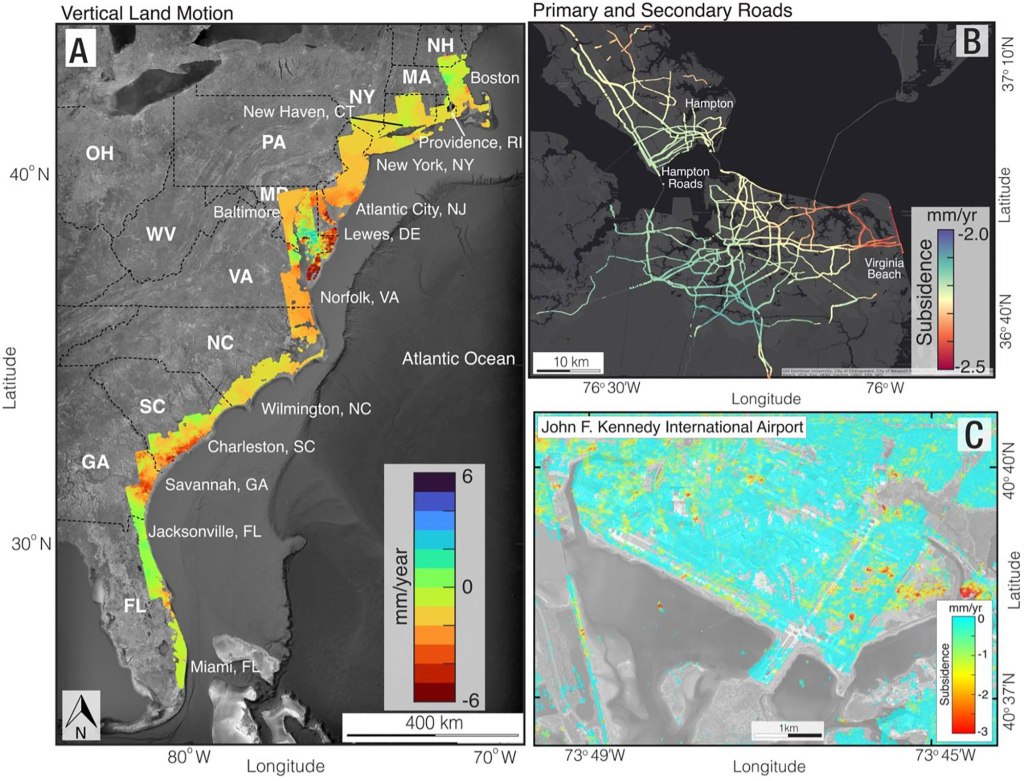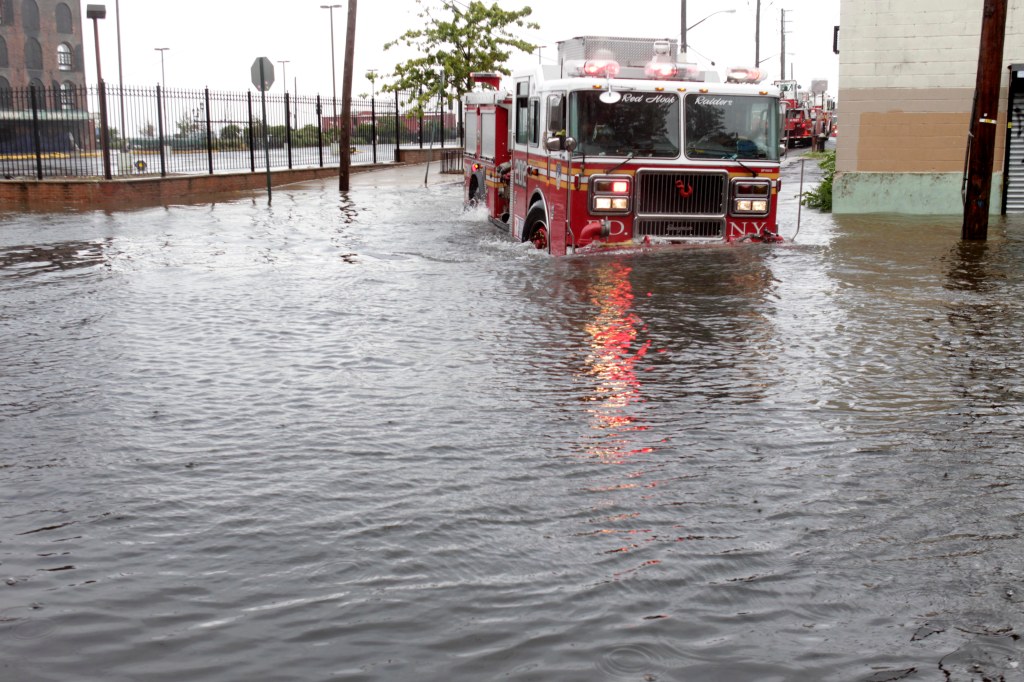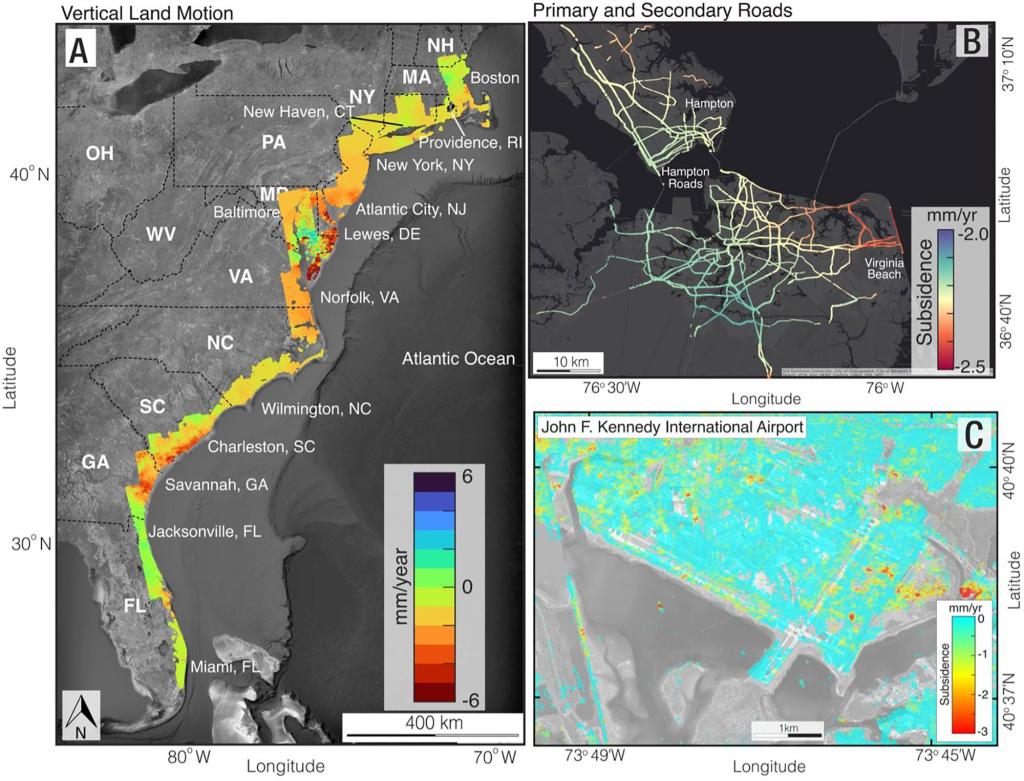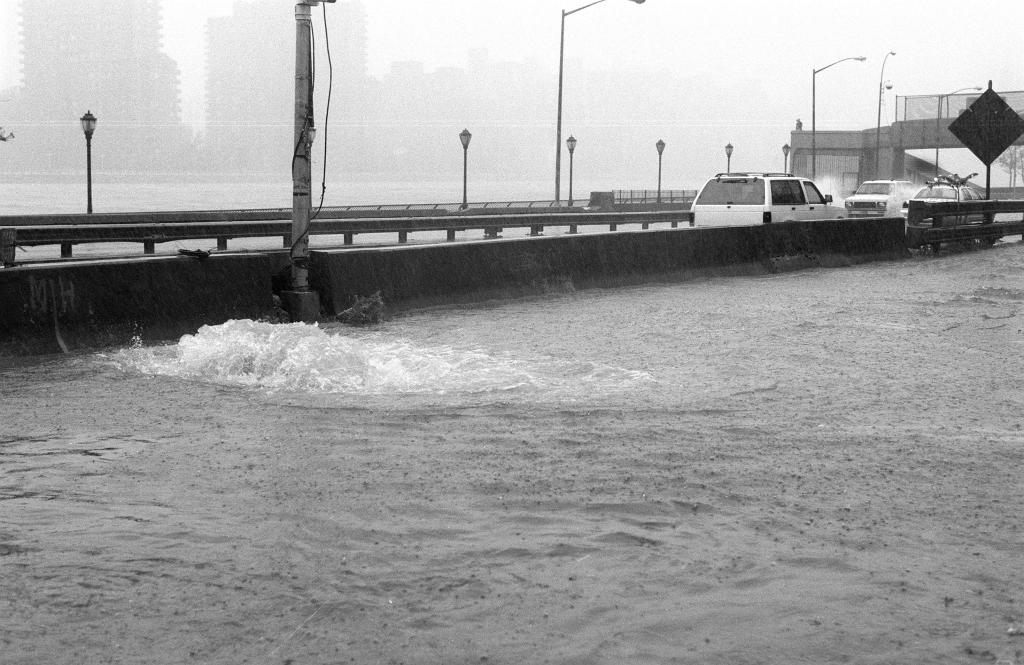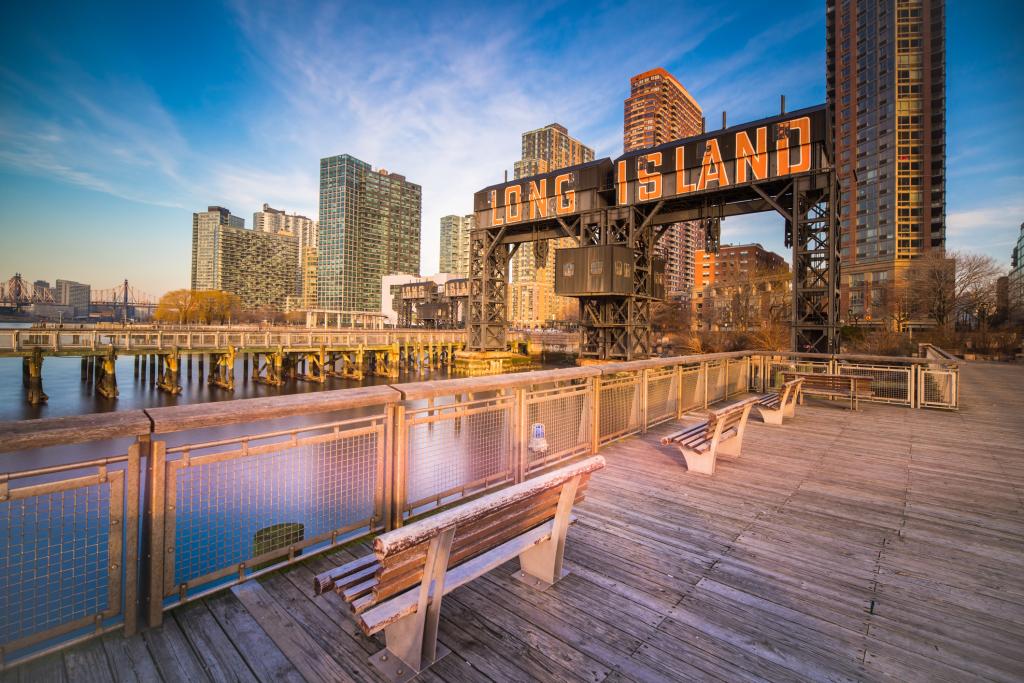East Coast cities are sinking at an alarming rate, new research warns: ‘Impacts are real’
New York City is reaching an all-time low — literally.
New research reveals dramatic concern that the Big Apple, Long Island and many more Atlantic coastal regions face an inevitable risk of sinking under the weight of their buildings at an alarming rate.
“It affects you and I and everyone. It may be gradual, but the impacts are real,” Virginia Tech professor and researcher Manoochehr Shirzaei said.
Other metropolitan areas like Baltimore, Maryland, along with Norfolk and Virginia Beach in Virginia, were also flagged as worrisome coastal areas prone to dangerous flooding as a result of the sinking land.
The new study, published in Proceedings of the National Academies of Sciences, highlights that the rate of sinking — scientifically called subsidence — is occurring at a staggering 2 millimeters per year in many areas.
That level, which is potentially impacting 2 million people and 800,000 properties along the East Coast, “should cause concern,” lead author Leonard Ohenhen added.
“For example, significant areas of critical infrastructure in New York, including JFK and LaGuardia airports and [their] runways, along with the railway systems, are affected by subsidence rates exceeding 2 millimeters per year.”
September research by the National Aeronautics and Space Administration noted that the areas around LGA and the U.S. Open’s Arthur Ashe Stadium had fallen at 3.7 and 4.6 millimeters per year between 2016 to 2023.
A September viral video also captured a wild flood scene at LaGuardia as passengers endured ankle-deep water within the airport.
The Virginia Tech study warns that more than 1,400 miles of East Coast terrain is sinking at a rate of more than 5 millimeters annually.
That’s four more than the rate of global sea rise.
Many of these areas are already seeing an influx of issues relevant to the sinking — water is easier to flood with less resistance — by way of increased flooding, plus intense storm and hurricane surges.
“All climate change models show that in the future, the storms, the hurricanes will get more intense,” Klaus Jacob, a professor emeritus at Columbia University’s Lamont-Doherty Earth Observatory, previously told The Post.
“So that probably means stronger storm surges, higher storm surges, and that’s more risk and lost protection for the city.”
This week’s nor’easter, which left a devastating amount of flood waters in coastal areas like Long Island and Connecticut, is a clear-cut example of such worries.
But Jacob warns that the area at risk is much broader than just the immediate tri-state area.
“Long Island, Staten Island, Brooklyn, Queens, The Bronx, you name it,” he said.
“The Hudson Valley all the way up to Troy … I would say anything at elevation 20 [feet above sea level] and below is an extreme risk. There’s a marginal risk for elevations between 20 and 30 feet.”
He believes that New York City, especially downtown Manhattan, will need to convert itself into a modern Venice within the next century.
“If we want to keep skyscrapers and other buildings functioning, they will need to become mini islands that are standing in the water,” Jacob said.
“They will have to be serviced not by taxis on wheels, but instead amphibian boats. Barges will have to come to pick up the garbage. And we need more highlines that connect the various buildings with each other.”
As a comparatively quick fix, the Army Corps of Engineers is proposing a $52 billion series of sea walls to surround areas like Manhattan and the Meadowlands.
It has received bipartisan criticism.
“That is a finite duration … sooner or later, we will run out of our means and ways to deal with those issues,” Jacob added.
“Now that’s not happening tomorrow, but a few decades after tomorrow and from [year] 2100 on, it will get serious.”








